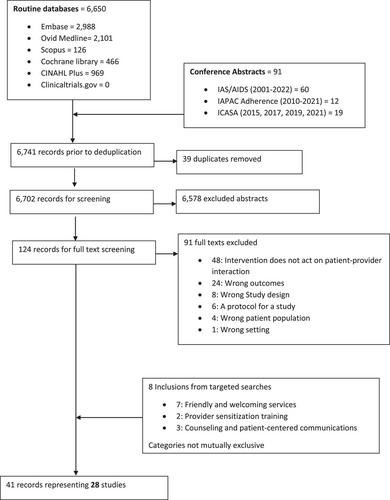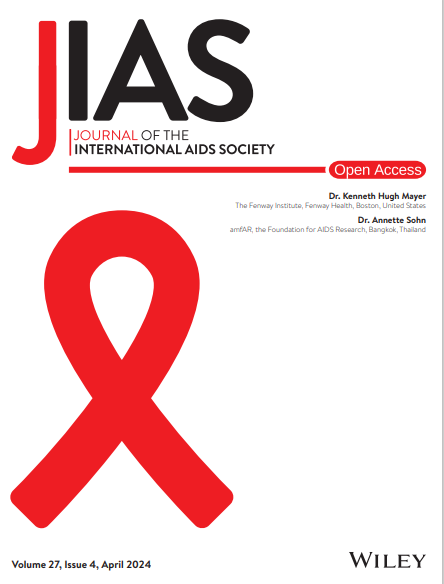Person-centred care (PCC) has been recognized as a critical element in delivering quality and responsive health services. The patient−provider relationship, conceptualized at the core of PCC in multiple models, remains largely unexamined in HIV care. We conducted a systematic review to better understand the types of PCC interventions implemented to improve patient−provider interactions and how these interventions have improved HIV care continuum outcomes and person-reported outcomes (PROs) among people living with HIV in low- and middle-income countries.
We searched databases, conference proceedings and conducted manual targeted searches to identify randomized trials and observational studies published up to January 2023. The PCC search terms were guided by the Integrative Model of Patient-Centeredness by Scholl. We included person-centred interventions aiming to enhance the patient−provider interactions. We included HIV care continuum outcomes and PROs.
We included 28 unique studies: 18 (64.3%) were quantitative, eight (28.6.%) were mixed methods and two (7.1%) were qualitative. Within PCC patient−provider interventions, we inductively identified five categories of PCC interventions: (1) providing friendly and welcoming services; (2) patient empowerment and improved communication skills (e.g. supporting patient-led skills such as health literacy and approaches when communicating with a provider); (3) improved individualized counselling and patient-centred communication (e.g. supporting provider skills such as training on motivational interviewing); (4) audit and feedback; and (5) provider sensitisation to patient experiences and identities. Among the included studies with a comparison arm and effect size reported, 62.5% reported a significant positive effect of the intervention on at least one HIV care continuum outcome, and 100% reported a positive effect of the intervention on at least one of the included PROs.
Among published HIV PCC interventions, there is heterogeneity in the components of PCC addressed, the actors involved and the expected outcomes. While results are also heterogeneous across clinical and PROs, there is more evidence for significant improvement in PROs. Further research is necessary to better understand the clinical implications of PCC, with fewer studies measuring linkage or long-term retention or viral suppression.
Improved understanding of PCC domains, mechanisms and consistency of measurement will advance PCC research and implementation.



